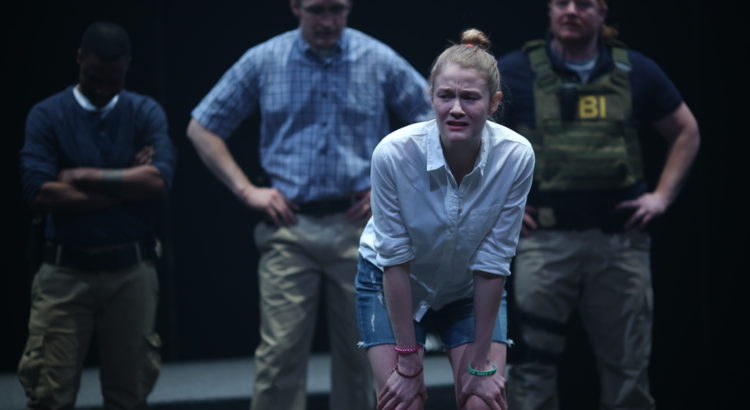It starts with a foggy, black stage and a spotlight on a woman. That woman is Reality Winner. You may not recognize her name, but you might’ve heard her story. She leaked a document about the 2016 election to The Intercept and was arrested and sentenced to 63 months. However, as she sits in prison, Half Straddle, a New York Based-company, has kept her story alive, and they brought it to Ann Arbor in their UMS debut.
The premise of the concept itself made the theatrical piece intriguing. With nothing to go off of but an audio transcript and the reported aftermath, I felt like there wasn’t much to the story.
But boy was I wrong.
The tone, the body language, and the pauses—all of which were purely imagined for the stage—dictated the play more than the verbatim words. Every cough was captured, As the actors walked around the small stage, it shifted from the driveway to the backyard to room to room. And you knew that with every step they took, they were getting closer to the gripping truth. However, due to the bare staging and the nature of the script, some parts of the play were confusing as scenes shifted or we heard simply one-sided conversations. Additionally, the sudden bursts of noise and flashes of lights were unexpected, and while some of them indicated parts of the transcript that were redacted, others were unexplained, leaving the audience wondering what was being left unsaid and why things were staged a sudden way. The disorienting sounds of a synth further enhanced the thrill.
The four actors of Half Saddle conveyed the tense situation and brought the transcript to life in their imagined enactment. Emily Davis captured the nervous chuckles and humor of Reality, trying to lighten up the conversation as Pete Simpson and TL Thompson played the two special agents who acted friendly through small talk but persisted in getting the truth. Becca Blackwell played an unknown male whose role was pretty nebulous, but they seemed to alleviate the tension with their body humor. Their combined presence on the stage—making it a total of three versus Reality—seemed to corner her intimidatingly. When you realize there were eleven agents interrogating Reality in reality, the nerves conveyed in the transcript seem completely reasonable.
“Is This a Room” is a surreal interpretation of the events that went down on June 3, 2017. And it’s a reminder that the ramifications of that day remain today.





